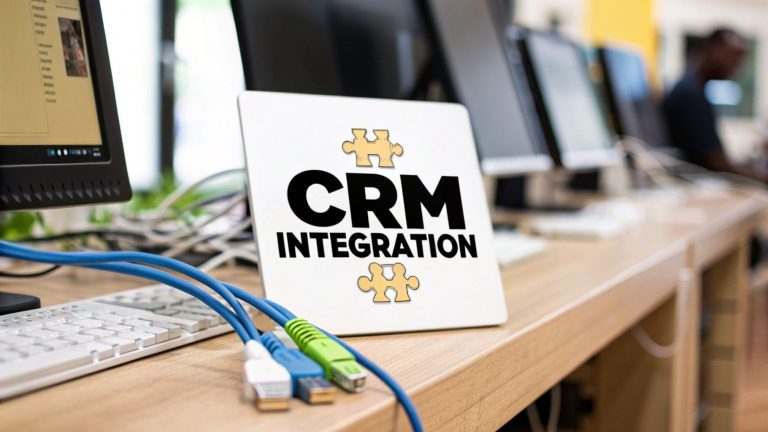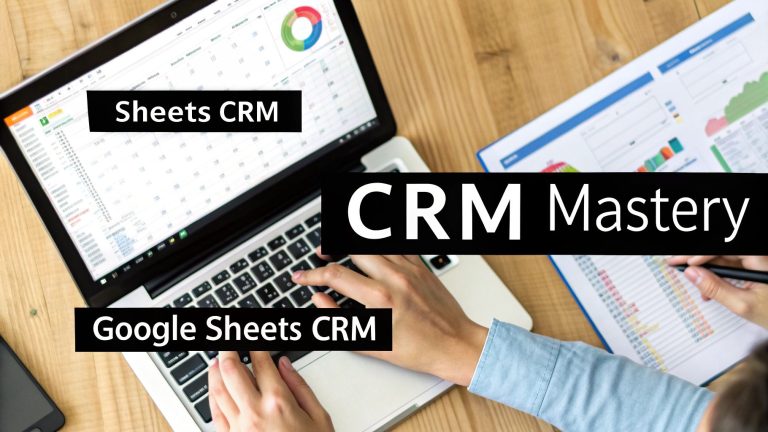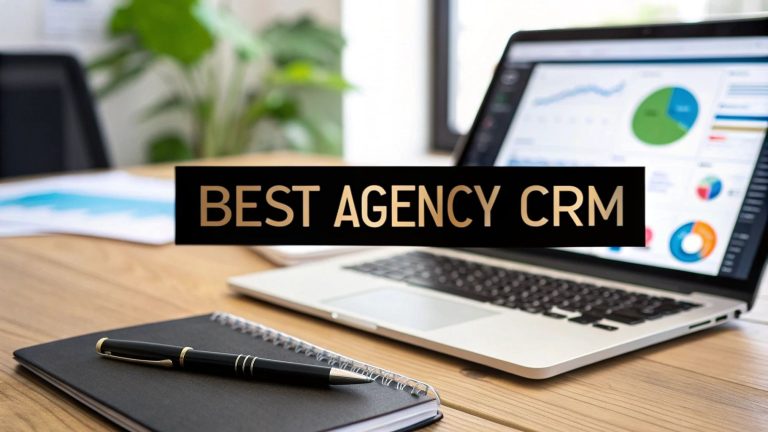Effective Lead Follow Up Strategies to Boost Conversions
That growing list of untouched leads isn't just a spreadsheet row—it's lost revenue. It’s a story I see all the time: businesses generate a steady stream of quality leads, only to watch them go cold because of slow or inconsistent follow-up. This isn't a failure of effort; it's a failure of process.
Why Your Current Lead Follow Up Fails
Let’s be honest, most lead follow-up systems are broken. They rely on manual tasks, spotty timing, and generic messages that just get lost in the noise. A sales team, often juggling a dozen other priorities, misses that critical window to connect with someone who's actually interested. A huge blind spot for many is not understanding [the danger of missed calls](https://www.myaifrontdesk.com/blog/danger of missed calls) and delayed emails, which directly kills opportunities and leaves prospects feeling ignored.
This isn’t just a feeling; the numbers back it up. The first vendor to respond wins the sale 35-50% of the time. That single stat reveals a fundamental truth: speed is your greatest advantage when it comes to converting a new lead.
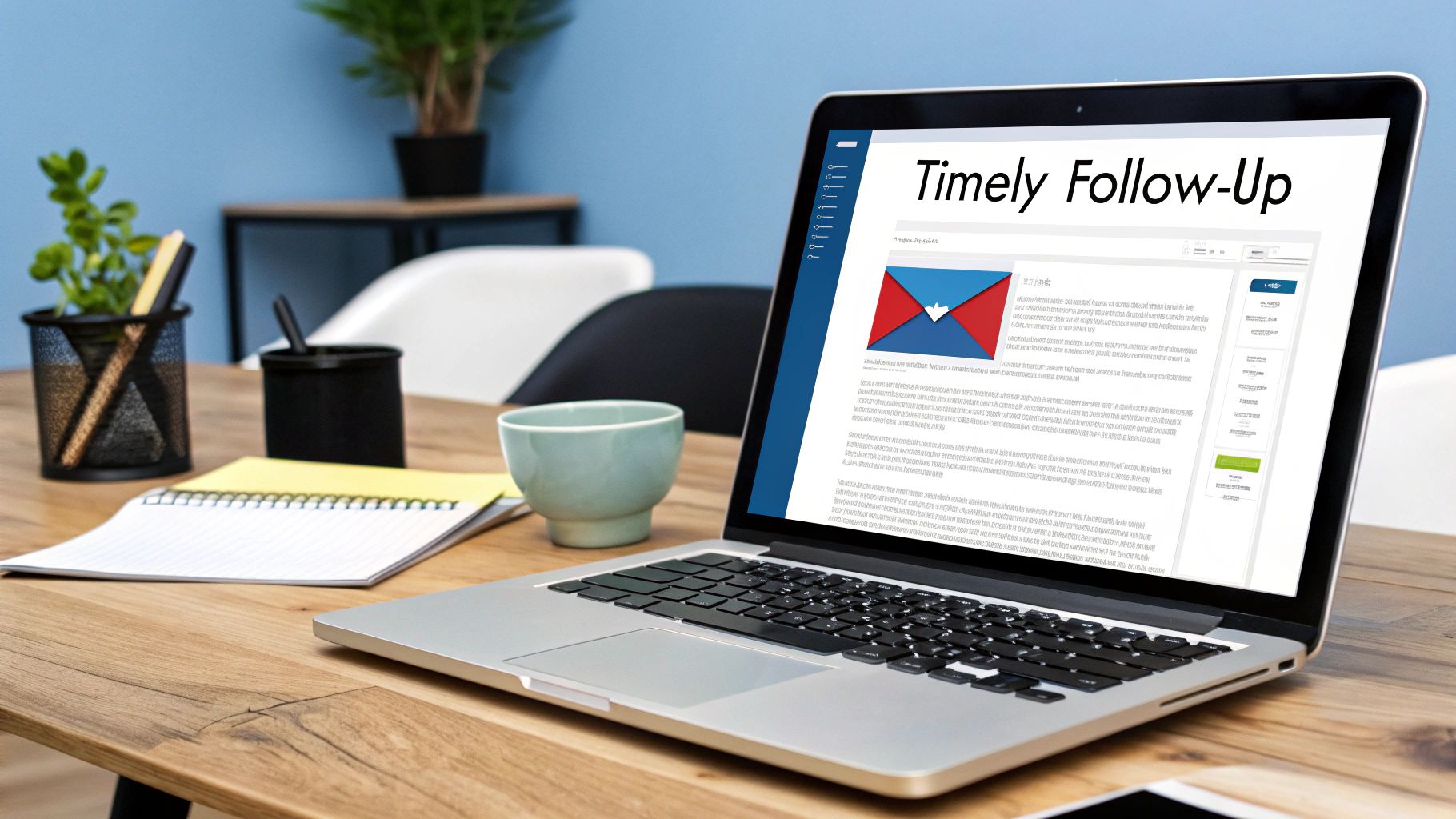
The Real Cost of a Broken Process
When a lead follow-up process falls apart, the consequences are way bigger than just one missed sale. It creates a ripple effect across your entire business:
- Wasted Marketing Spend: Every dollar you spent getting that lead is thrown away if no one engages with them properly.
- Damaged Brand Perception: Slow or nonexistent follow-up makes your company look disorganized and, frankly, like you don't care about a potential customer's business.
- Decreased Team Morale: Your sales reps get burned out chasing leads that have already gone cold, knowing they could have closed them with a faster, more structured approach.
The core problem is rarely about a lack of effort. It’s about the absence of a smart, scalable system that blends speed, personalization, and automation.
Moving Beyond "Trying Harder"
Just telling your team to "follow up faster" isn't a strategy—it's a wish. The real solution is building a defined, repeatable process. In fact, businesses that create a standardized follow-up system see a 78% higher conversion rate than those winging it.
This guide isn't about abstract advice. It's a clear roadmap for turning your biggest liability—that pile of cold leads—into your most powerful conversion asset.
Designing a High-Impact Follow Up Cadence
Let's be honest, having a plan is the difference between converting a lead and letting them go cold. An effective follow-up cadence is your roadmap—a thought-out sequence of touchpoints that keeps you on their radar. It's about being persistent without being a pest.
The best systems add real value at every turn.
So, how do you build one? Imagine a hot lead just landed in your lap. They filled out your "Request a Demo" form. This person isn't just window shopping; they’ve actively asked to hear from you. Your response needs to be fast, organized, and genuinely helpful.
This is where a clear process flow makes all the difference, turning that initial interest into a real conversation.
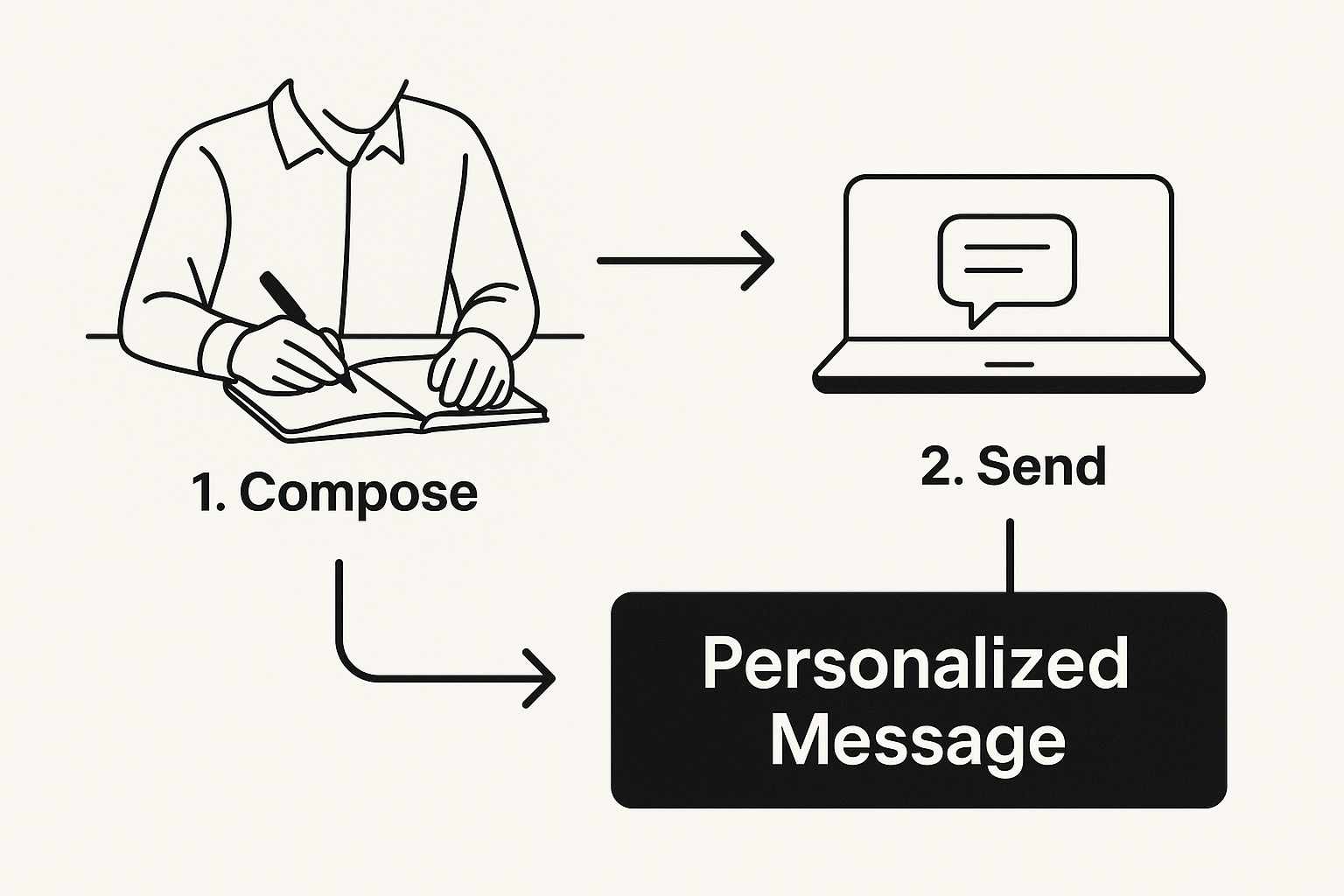
Whether you're picking up the phone, shooting off an email, or jotting down notes, the quality of your message is everything. A great cadence is just the delivery system for those personalized, high-value interactions.
Building a Multi-Channel Cadence
If your entire follow-up strategy lives in your email inbox, you're going to get ignored. It's just that simple. Today's best approach is multi-channel, meeting leads on the platforms they actually use. A smart mix of email, phone calls, and SMS is a total game-changer.
Here’s why that combination is so powerful:
- Email: It’s perfect for sending the heavy stuff—case studies, detailed proposals, or helpful blog posts. It gives the lead space to review everything on their own schedule.
- Phone Calls: You just can't replicate the human touch of a real conversation. A quick call can uncover pain points and build rapport in minutes, something email can take days to do.
- SMS: Need to get a message seen now? Text is your answer. It's ideal for appointment reminders or quick check-ins, especially with open rates hovering around 90%. It’s your ace in the hole for time-sensitive messages.
A winning cadence isn't just about sending a bunch of messages. It's about starting a conversation. Each touchpoint should feel connected to the last, guiding your lead forward by consistently offering value.
Sample 14-Day Lead Follow Up Cadence
To show you exactly what this looks like in action, here’s a practical 14-day, 7-touchpoint plan built for that "demo request" lead we talked about. You can use this as a blueprint and tweak it to fit your own sales cycle. The goal is to stay top-of-mind without driving them crazy.
You'll see the cadence is front-loaded—more intense right when their interest is highest, then it gracefully spaces out.
Sample 14-Day Lead Follow Up Cadence
| Day | Channel | Action & Purpose |
|---|---|---|
| 1 | Instant Response: Fire off an automated email confirming their request. Suggest a few specific times to connect. Your goals here are speed and setting clear expectations. | |
| 1 | Phone | Initial Call: Call within 5-10 minutes. Seriously. If they don't pick up, leave a short, friendly voicemail mentioning the email you just sent. |
| 3 | Provide Value: Send a relevant case study or a link to a short article that solves a common problem in their industry. This proves you're a helpful expert, not just another vendor. | |
| 5 | Phone | Second Call: Try again, but at a different time of day. Reference the resource you sent. "Hey, just wanted to see if that case study was helpful…" |
| 7 | SMS | Quick Check-In: If you have their permission, a quick text can work wonders. "Hi [Name], just sent a quick email with some ideas for your demo. Let me know what you think!" |
| 10 | Address a Pain Point: Craft an email with a specific subject line, like "A thought on [Their Company]'s [Specific Challenge]." Offer one quick, useful tip. | |
| 14 | The Breakup Email: Send a final, polite email to close the loop. This creates a little urgency and often gets a response from people who have just been busy. |
This kind of structured approach means no lead ever falls through the cracks. Every single interaction has a purpose. You're not just "checking in"—you're guiding, helping, and building a relationship. That's how you turn a simple lead follow up task into your most powerful conversion tool.
Writing Messages That Actually Get Replies
A perfect follow-up cadence is useless if your messages get ignored. It's a classic mistake. We spend all this time mapping out the when, but we forget that the what is what actually gets the reply.
The goal is simple: stop sending those self-serving, "just checking in" emails. Instead, shift to customer-centric communication that genuinely helps, guides, and gets a conversation started. The secret isn't some complex formula; it's about being human and offering real value.
Every single message you send should answer the lead’s unspoken question: "What's in it for me?"

Deconstructing an Effective Follow-Up Email
Let’s break down what a high-impact email actually looks like. Instead of staring at a blank screen, think of it as assembling four key building blocks for every follow-up.
-
The Curious Subject Line: Your first hurdle is the inbox. Generic lines like "Following Up" or "Checking In" are a one-way ticket to the trash folder. You have to spark curiosity and give context. Something like, "Next steps for [Their Company Name]?" or "That ebook you downloaded…" is way more compelling. Getting this right is critical, and it all comes down to creating high-impact email subject lines that demand to be opened.
-
The Contextual Opener: Right away, remind them why you're in their inbox. This simple step shows you're paying attention and not just blasting a generic template. Kick it off with something direct: "Thanks for downloading our guide on X," or "Following up on your demo request from yesterday…"
-
The Value-Packed Body: This is the heart of your message. Don't just jump to asking for a meeting. Offer something genuinely useful first. This could be a link to a relevant case study, a quick tip related to the resource they downloaded, or an insightful question about their current challenges.
-
The Low-Friction Call-to-Action (CTA): Make it incredibly easy for them to respond. Avoid the lazy, open-ended "Let me know when you're free." Instead, offer a specific, low-commitment action. A simple yes/no question like, "Is this something you’re prioritizing this quarter?" is a breeze to answer.
Real-World Scenarios and Templates
Applying this framework to different situations makes your follow-up feel personal and relevant every time.
Scenario 1: Post-Webinar Follow-Up
A lead just attended your webinar on "Improving Team Productivity." They’re clearly interested, but maybe not ready to buy.
- Subject: Your thoughts on the productivity webinar?
- Body: Hi [Name], thanks for joining our session yesterday. I was curious which part of the presentation on [Mention a specific topic] resonated most with you. Many attendees found the section on workflow automation particularly useful. Here’s a quick guide we put together on that topic if you’re interested.
Scenario 2: Ebook Download Follow-Up
Someone downloaded your "Beginner's Guide to Facebook Ads."
- Subject: That Facebook Ads guide…
- Body: Hi [Name], I saw you grabbed our ads guide. Hope you're finding it helpful! Most people get stuck on audience targeting (Chapter 3). Are you running into any specific challenges there? Happy to share a few quick thoughts.
Remember, the goal isn't to make a sale in the first email. It's to start a conversation. Ask questions, offer help, and be a resource, not just a salesperson.
Getting this right has a massive impact. Research shows that while 220% more leads respond after the first follow-up, effectiveness drops off sharply after that. This just proves how critical it is for your initial messages to be exceptionally well-crafted.
Putting Your Follow Up on Autopilot for Maximum Efficiency
Let's be real: manual follow-up is a soul-crushing time drain. It’s also the number one reason hot leads go cold. This is where you put your carefully designed cadence on autopilot, empowering your sales team to stop chasing and start closing.
With a tool like LeadSavvy Pro, you can build an entire workflow that just runs in the background, triggered by specific actions your leads take. This isn't about blasting out generic, robotic messages. It's about scaling personalized, timely communication so you never, ever miss an opportunity.
The whole thing kicks off with a trigger. This is the event that starts the dominoes falling. A classic, powerful trigger is a new website form submission—like when someone requests a demo or downloads a free guide. The second that trigger fires, your pre-built sequence jumps into action.
Building Your Automated Workflow
Let's walk through building a simple but incredibly effective workflow. Picture this: a new lead fills out your "Contact Us" form. Instead of that notification just sitting in an inbox waiting for someone to see it, it can instantly launch a multi-touch sequence.
Here’s a glimpse of what that looks like in a visual workflow builder:
This kind of visual map lets you lay out every step, delay, and action. It gives you a crystal-clear overview of the journey you're taking your leads on from the very first hello.
A typical sequence might look something like this:
- Instant Email: An email goes out the second they hit submit. This confirms you got their request and tells them what's next.
- Add a Delay: The system then waits. Maybe for two days. This pause is crucial—you don't want to seem desperate or bombard them.
- Send an SMS: After the delay, an automated SMS hits their phone. This is a high-visibility touchpoint that can grab their attention on a completely different channel.
- Create a Manual Task: On day five, the system can automatically create a task in your CRM for a sales rep to pick up the phone and make a personal call.
The Power of Conditional Logic
This is where automation gets really intelligent. What happens if a lead replies to your first email or books a meeting? The last thing you want is to keep hammering them with automated messages.
That’s where conditional logic comes in. You can set up simple rules that automatically pull anyone out of the sequence the moment they reply or take action. This bit of intelligence is what makes the experience feel human. It prevents those awkward moments where a rep is on the phone with a lead who is simultaneously getting an automated "Hey, just checking in!" email.
The goal of automation isn't to replace humans. It's to handle the repetitive, time-sensitive tasks with perfect consistency, freeing up your team to focus on high-value conversations and actually closing deals.
By setting up these workflows, you're not just saving time; you're building a safety net that guarantees no lead ever slips through the cracks again. For a deeper look, check out our complete guide on creating an automated lead nurturing system.
And if you really want to supercharge the top of your funnel, look into how chatbots can qualify leads and boost sales to automate the very first interaction.
How to Measure and Improve Your Follow Up Strategy
A great lead follow-up process isn't something you can set and forget. It's a living system that needs to evolve based on real data. If you want to stop guessing what works and start knowing, you have to track the right performance metrics. This is how you turn a good strategy into an unbeatable one.
The numbers tell a story. They show you where your process is strong and where it's leaking revenue. Focusing on just a few key metrics will give you a surprisingly clear picture of what needs to be adjusted. After all, you can’t fix what you don’t measure.
Key Metrics That Truly Matter
Don't get lost in a sea of vanity metrics. Your focus should be on data points that directly connect your follow-up efforts to actual business results.
Start with these three essentials:
- MQL to SQL Conversion Rate: This is the big one. It measures how many marketing-qualified leads your sales team accepts as legitimate opportunities. A low rate might mean your initial lead qualification is too broad or your follow-up isn't effectively identifying serious buyers.
- Reply Rate Per Touchpoint: Are people responding to your second email but ignoring your first? Tracking replies for each step in your cadence reveals which messages are hitting the mark and which ones are falling flat.
- Average Time to Close: How long does it take to turn a new lead into a paying customer? A long sales cycle could indicate that your follow-up cadence isn't creating enough urgency or value.
A high email open rate paired with a low reply rate is a classic red flag. It tells you your subject line is working, but the content inside your message isn't compelling enough to earn a response.
Turning Data into Actionable Insights
Once you have the data, the real work begins: interpreting it. The MQL to SQL conversion rate is a particularly powerful metric to watch. Top-performing companies often see rates as high as 40%, a benchmark they hit through smart lead scoring and, critically, prompt follow-ups.
In fact, simply following up within the first hour can boost conversions to a whopping 53%. That number alone shows the massive impact of timely engagement. If you want to dive deeper, you can check out more conversion rate benchmarks for 2025 on data-mania.com.
Noticing a pattern where leads consistently drop off after your third touchpoint? That's a clear sign your cadence might be losing momentum or perceived value. It’s your cue to go in and strengthen that part of your sequence. For a broader perspective on this, explore our guide on how to measure marketing effectiveness for more ideas.
The simplest way to start improving is with A/B testing. Don't try to overhaul your entire strategy at once. Instead, test one variable at a time—try two different email subject lines or change up the call-to-action in your SMS messages. Small, incremental changes based on real data are what will continuously refine your approach and lead to significantly better results over time.
Common Questions About Lead Follow Up
Even with a solid game plan, certain questions about following up with leads always seem to surface. I hear them all the time. Let's tackle a few of the most common ones so you can get clear, practical answers and put them to use right away.
How Many Follow-Up Attempts Should I Make?
This is the big one, isn't it? While there's no single magic number, just stopping after one or two tries is a massive mistake. The data is pretty clear: 80% of sales require at least five follow-ups to close.
A great place to start is building a sequence with 7-10 touchpoints spread out over a few weeks.
The real key isn't just the number of pings, but the value you bring with each one. If a lead goes dark after you've run through your whole sequence, don't just toss them out. Move them into a long-term nurturing campaign. That way, you’ll stay top-of-mind for when their situation inevitably changes.
For a much deeper dive into building the perfect cadence, you should check out these lead follow up best practices.
What Is the Best Time of Day to Follow Up?
You’ll hear a lot of general advice pointing to mid-morning or mid-afternoon on weekdays. Honestly? The "best" time is completely dependent on your specific audience. A B2B professional is probably glued to their inbox during the workday, but a B2C customer might be more likely to engage in the evenings after dinner.
Forget the generic advice and look at your own data. That's the only real source of truth. Dive into your email platform’s analytics to see when your audience is actually opening and clicking. Test different send times and let the results guide you.
Should I Use Both Email and SMS for Follow Up?
Without a doubt, yes. A multi-channel strategy is just flat-out more effective than putting all your eggs in one basket. Each channel has its own strengths, and using them together makes your entire follow-up effort stronger.
- Email is your go-to for sending detailed information. Think proposals, case studies, or helpful guides.
- SMS is unbeatable for quick, high-visibility messages. It’s perfect for things like meeting confirmations or time-sensitive reminders, especially with its near-perfect open rates.
The trick is to use them in tandem. Just make sure you have clear consent for SMS, and always keep your texts short, sweet, and to the point.
Ready to stop letting good leads slip through the cracks? LeadSavvy Pro automates your entire follow-up process so you can focus on what you do best—closing deals. Get started for free today.


